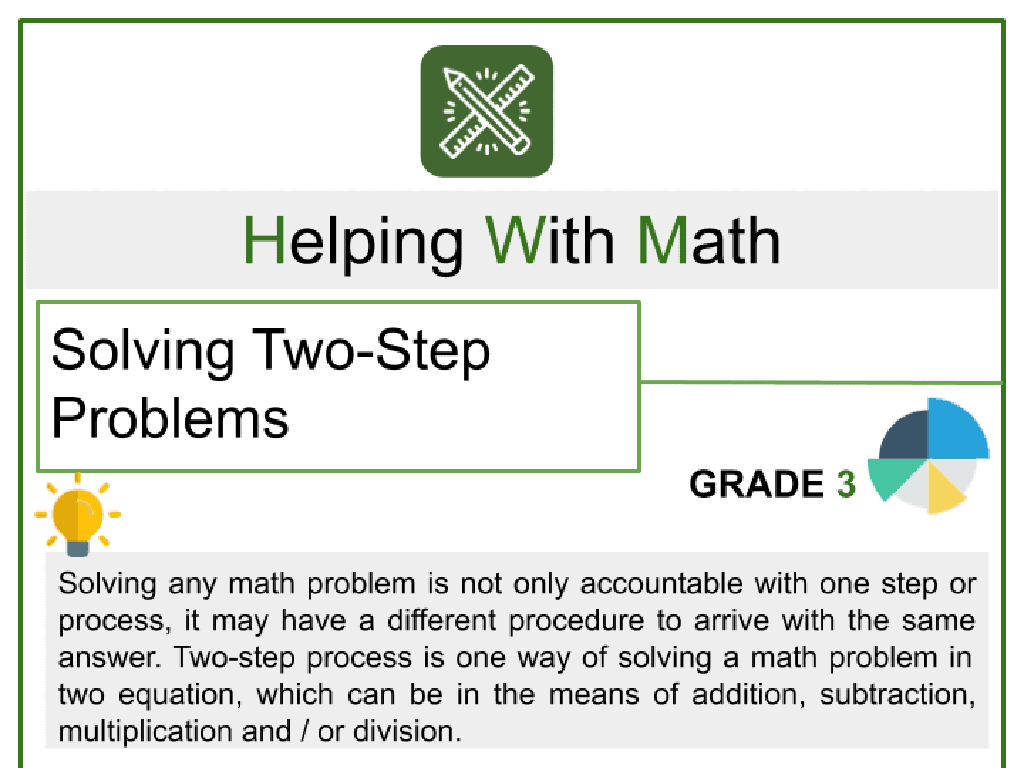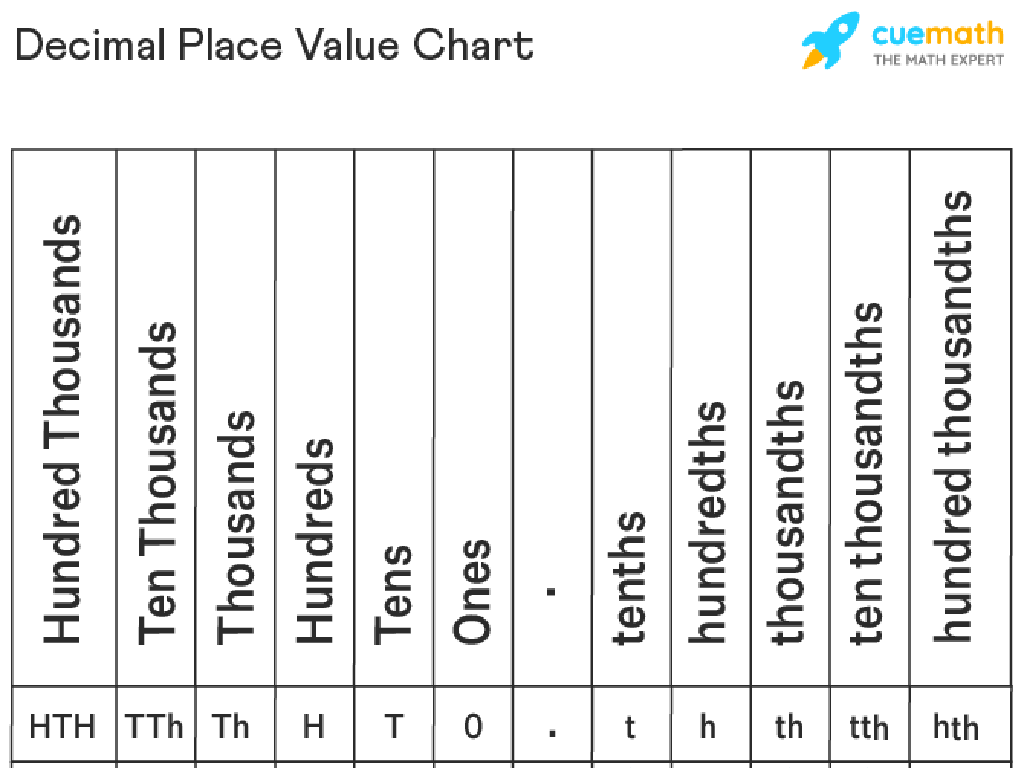Calculate Mean Absolute Deviation
Subject: Math
Grade: Sixth grade
Topic: Statistics
Please LOG IN to download the presentation. Access is available to registered users only.
View More Content
Understanding Mean Absolute Deviation
– Statistics: A vital math skill
– Today’s focus: Mean Absolute Deviation
– MAD measures how spread out numbers are from the mean
– Exploring the importance of MAD
– Learning MAD helps in understanding data variability
– Real-world application of MAD
– Used in fields like meteorology, finance, and quality control
|
This slide introduces the concept of Mean Absolute Deviation (MAD) as a crucial part of statistics, which is a key skill in mathematics. Mean Absolute Deviation helps us quantify the average distance between each data point and the mean, providing a clear picture of data variability. Understanding MAD is essential for students as it lays the foundation for more advanced statistical concepts and data analysis. It’s widely used in various real-world scenarios, such as predicting weather patterns, assessing stock market volatility, and ensuring product quality. Encourage students to think about how understanding data variability might be important in their daily lives and future careers.
Understanding Mean Absolute Deviation
– Define Mean Absolute Deviation
– MAD is the average distance between each data point and the mean.
– MAD as a measure of spread
– It shows how ‘spread out’ data points are from the average.
– Real-life MAD applications
– Used in weather forecasting to predict temperature variations.
– Exploring data variability with MAD
– Helps in understanding the consistency of data.
|
Mean Absolute Deviation (MAD) is a statistical measure that helps us understand the variability or spread in a set of data. It’s calculated by taking the average of the absolute differences between each data point and the mean of the dataset. This concept is crucial for students to grasp as it provides insight into the consistency and reliability of data. For instance, in weather forecasting, MAD can be used to predict how much daily temperatures might vary from the average. When teaching this concept, provide students with datasets to calculate MAD and discuss how it can be applied in various real-life scenarios to make predictions and informed decisions.
Calculating the Mean
– Recap: Understanding the Mean
– The mean is the average of a set of numbers.
– Example: Mean calculation
– Let’s calculate the mean of: 3, 7, 5, 9.
– Practice Problem: Class activity
– Find the mean of: 4, 8, 6, 10 together.
– Discuss: Importance of Mean
|
Begin the lesson by recapping the concept of the mean as the average value of a data set, which is found by adding all the numbers together and then dividing by the count of numbers. Provide a simple example with a small data set to calculate the mean step by step. For the practice problem, engage the class in an interactive activity where they work together to find the mean of a given set of numbers. Emphasize the importance of the mean in understanding the central tendency of data in various real-life situations. This activity will help solidify their understanding of the mean and prepare them for learning about mean absolute deviation.
Understanding Deviation in Statistics
– ‘Deviation’ definition in stats
– Deviation is the distance of a data point from the mean
– How to calculate deviation
– Subtract the mean from each data point
– Class example: data point deviation
– Use class data to find each point’s deviation
– Mean Absolute Deviation (MAD)
– Average of absolute deviations from the mean
|
This slide introduces the concept of deviation, which is a measure of how spread out data points are from the mean (average) in a data set. Start by explaining that deviation is the distance from each data point to the mean, which can be positive or negative. Demonstrate how to calculate the deviation by subtracting the mean from each data point. Use a class example with real data to calculate the deviation for each point. Finally, introduce the Mean Absolute Deviation (MAD), which is the average of these absolute deviations, and explain its importance in understanding data variability. Ensure to provide a step-by-step process for calculating MAD and encourage students to practice with different data sets.
Understanding Absolute Values in MAD
– Define Absolute Value
– The distance of a number from zero on a number line, without considering direction.
– Importance in MAD
– Absolute values prevent summing up to zero and measure actual deviation.
– Converting deviations
– Change negative deviations to positive for accuracy.
– Practice with examples
– Let’s try converting -3, -7, 4 to absolute values: 3, 7, 4.
|
This slide introduces the concept of absolute value and its critical role in calculating the mean absolute deviation (MAD). Absolute value is used to express the distance of a number from zero on a number line, disregarding whether it is positive or negative. In the context of MAD, absolute values ensure that deviations from the mean are treated uniformly as distances without canceling each other out when summed. The practice component should involve converting negative deviations to positive to reinforce the concept and prepare students for calculating MAD. Provide several examples with different deviations for students to convert, ensuring they grasp the process of finding absolute values.
Calculating Mean Absolute Deviation (MAD)
– Step-by-step MAD calculation
– Find the mean, subtract each value, take absolute values, then average those.
– Example: MAD for a data set
– Let’s calculate MAD for: 3, 7, 7, 19.
– Group Activity: Find MAD
– In groups, use provided data to calculate MAD.
– Understanding MAD’s significance
|
This slide aims to consolidate the students’ understanding of Mean Absolute Deviation (MAD) by guiding them through the calculation process. Start by explaining the steps to calculate MAD: find the mean of the data set, subtract each data point from the mean, take the absolute value of each difference, and then find the mean of those absolute differences. Provide a clear example with a simple data set. For the group activity, distribute different data sets to each group and let them practice calculating MAD. This hands-on activity will help students grasp the concept and see how MAD measures the spread of the data around the mean. Discuss why understanding the variability of data is important in statistics.
The Importance of Mean Absolute Deviation
– What is Mean Absolute Deviation?
– It measures the average distance between each data point and the mean.
– MAD’s role in real-world scenarios
– Used to understand consistency in sports, finance, and weather patterns.
– Making decisions using MAD
– Helps in comparing the variability of different data sets.
– Real-life applications of MAD
– Think of examples like comparing test scores or daily temperatures.
|
This slide aims to explain why Mean Absolute Deviation (MAD) is a crucial concept in statistics and its practical applications. Start by defining MAD as a measure of spread that indicates the average ‘distance’ between data points and the mean of a data set. Emphasize how MAD can be used in various real-world contexts such as sports (to measure consistency of a player’s performance), finance (to assess investment risks), and meteorology (to understand temperature fluctuations). Discuss how understanding MAD can lead to better decision-making by allowing us to compare the consistency of different data sets. Encourage students to think of areas in their lives where they could apply MAD, such as comparing their grades across different subjects or analyzing daily activities. This will help them grasp the concept’s relevance and utility.
Class Activity: Let’s Calculate MAD!
– Survey classmates for data
– Calculate the Mean of your data
– Add all numbers and divide by total count
– Find Deviations and Absolute Values
– Subtract mean from each number, take absolute
– Compute and Share MAD with the class
– Average the absolute deviations to find MAD
|
This interactive class activity is designed to help students understand the concept of Mean Absolute Deviation (MAD) by applying it to real data they collect from their peers. Start by having students survey their classmates on a simple topic, such as the number of pets they have or hours of TV watched in a week. Once data is collected, guide students through calculating the mean by adding all the numbers together and dividing by the total count. Next, instruct them to find the deviation of each data point from the mean and to take the absolute value of each deviation. Finally, students will calculate the MAD by averaging these absolute deviations. Encourage students to present their findings to the class, fostering a discussion on the variability of their data. Provide additional support by walking around the classroom and assisting groups as needed. This hands-on approach not only solidifies their understanding of MAD but also enhances their ability to work with statistical data.
Review: Mean Absolute Deviation
– Recap: What is MAD?
MAD measures the average distance between each data point and the mean.
– Key points from today’s lesson
– Time for your questions
– How to use MAD in real life?
Examples: Comparing consistency in sports scores or daily temperatures.
|
As we conclude today’s lesson on Mean Absolute Deviation (MAD), let’s take a moment to review the key concepts. MAD is a statistical measure that helps us understand the variability within a set of data. It’s calculated by finding the average of the absolute differences between each data point and the mean of the dataset. This concept is important for students to grasp as it applies to real-world situations, such as analyzing consistency in sports or understanding daily temperature fluctuations. Encourage students to ask any questions they may have about today’s lesson to clarify their understanding. It’s also a good opportunity to assess their grasp of the material and to reinforce the day’s learning objectives.





